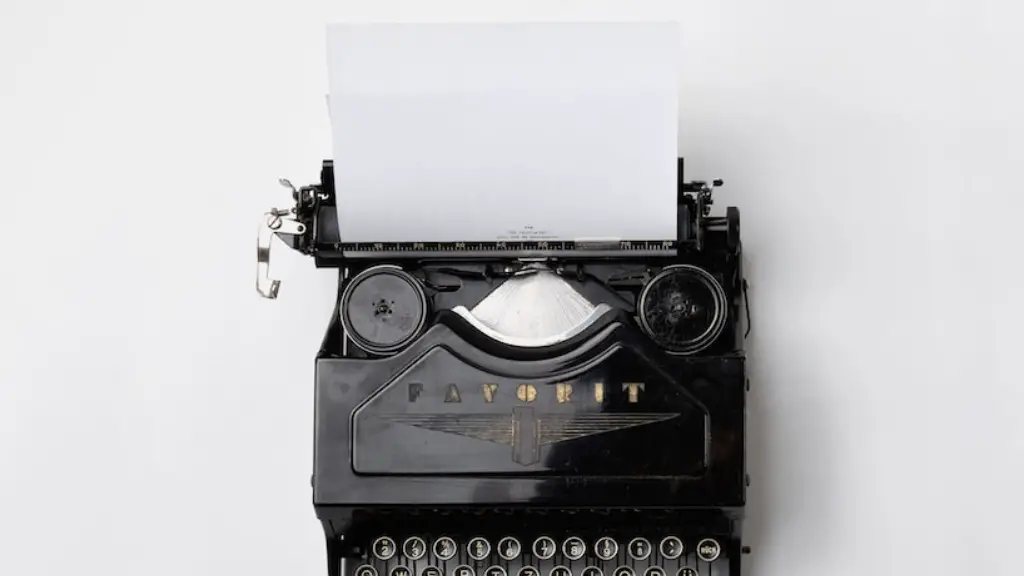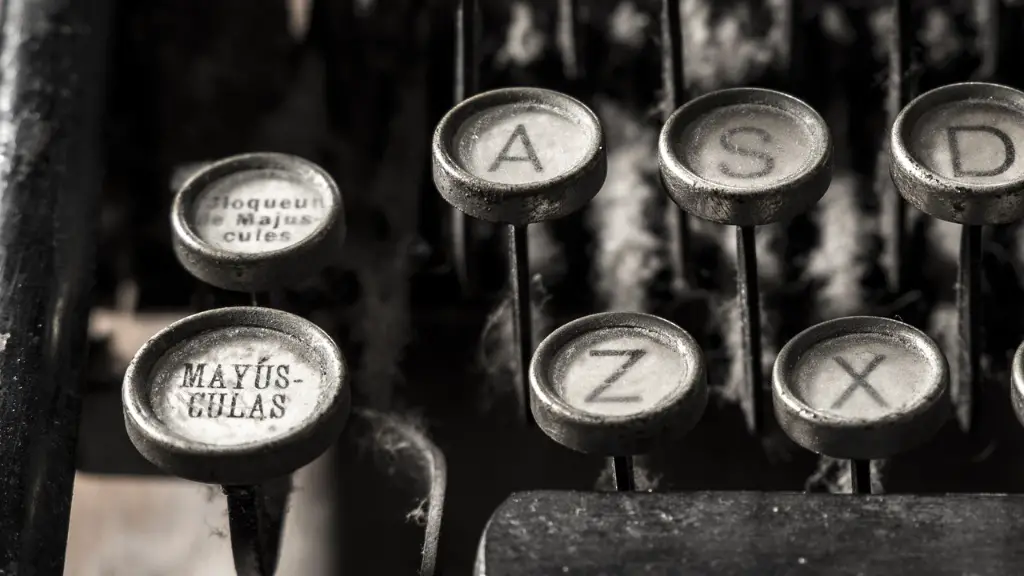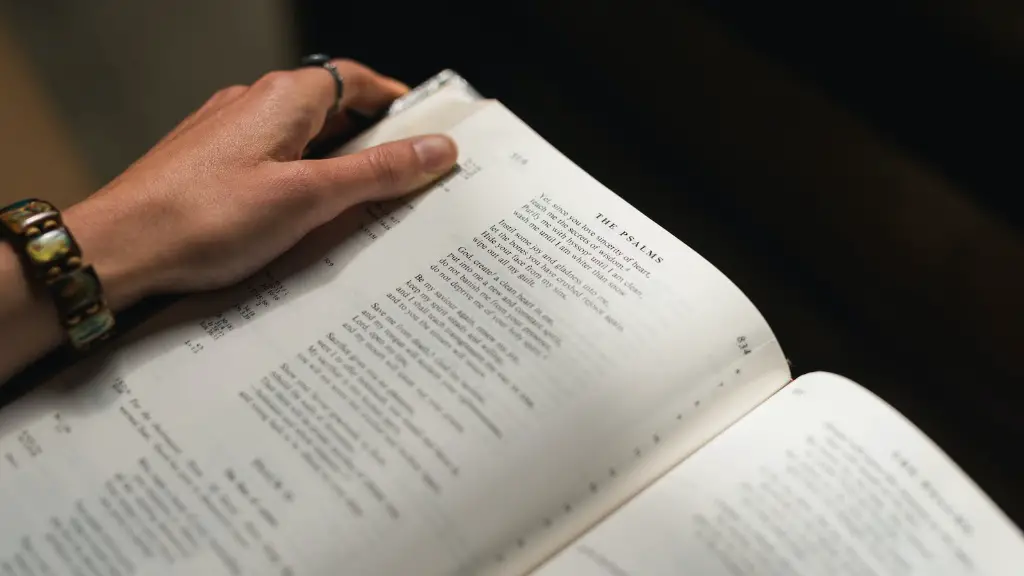Definition of Unrhymed Poetry
Unrhymed poetry is a type of poetry that lacks a regular rhyme pattern. Generally, unrhymed poems rely solely on the arrangement of words and sentences, rather than the traditional rhyming schemes associated with other types of poetry. As a result, the structure of an unrhymed poem often depends heavily on the poet’s intentions and individual style, making it more abstract and subjective than other forms of poetry.
Types of Unrhymed Poetry
There are several types of unrhymed poetry, each with its own distinct characteristics. Free verse is among the most commonly known. This type of unrhymed poem does not adhere to any specific meter or form, instead allowing the poet to craft their lines arbitrarily. Other types of unrhymed poetry include blank verse, which employs a set meter and meter pattern but without a rhyme scheme, and narrative verse, which uses a prose-like format to tell a story or convey a message. Furthermore, some poets choose to employ non-traditional structures, telling a story through a series of unrhymed, broken stanzas.
History of Unrhymed Poetry
Recently, unrhymed poetry has started to become progressively more popular, particularly among younger poets. This trend is largely driven by the internet and social media, as these platforms have become a primary venue for writing and sharing poetry. However, unrhymed poetry has a longer history than is often realised. Ancient poets such as Sappho were known to use ameter, employing a consistent pattern of accented and unaccented syllables in their works. Eventually, the form evolved to include more complex and regular forms, such as the sonnet, which still rely heavily on traditional rhymes to convey the poet’s meaning.
Relative Popularity of Unrhymed Poetry
Although unrhymed poetry is steadily becoming more popular, traditional rhyming forms still remain the dominant type of poetry today. This is largely due to the fact that many consider rhymed poetry to be easier to comprehend, as well as offering a more visceral emotional response due to the convenience of the rhyme patterns. Furthermore, traditional rhyming forms are the main type of poetry taught in schools and universities due to their ubiquity and recognizability. As a result, many aspiring poets are initially more comfortable writing in this form, and only begin to explore unrhymed poetry after becoming more familiar with the conventions of rhyme.
Criticism of Unrhymed Poetry
Notwithstanding its increasing popularity, unrhymed poetry still faces harsh criticism from some segments of the literary world. Traditionalists argue that the lack of a regular rhyme pattern makes unrhymed poems difficult to interpret and appreciate. Furthermore, they claim that unrhymed poetry is often vague and lacks emotional depth due to the loss of a traditional rhyme scheme. Nonetheless, many modern poets maintain that unrhymed poetry has the potential to be more meaningful and powerful than traditional forms due to its greater reliance on creative expression and craft.
Appreciation of Unrhymed Poetry
Despite the criticisms of some, many poets, readers and critics have praised the exploration of unrhymed poetry in recent years. Even traditionalists recognise that unrhymed poetry offers a chance for poetic expression that is otherwise missing from traditional forms. The modern appreciation of unrhymed poetry has also made it an essential part of the poetic landscape and has given writers an exciting new forum for creativity.
Unique Characteristics of Unrhymed Poetry
Unrhymed poetry is unique in that it challenges readers to experience a poem differently than they would a traditionally rhyming poem. This difference is particularly stark in terms of the interpretation of a poem. Without the aid of audible rhyme, the reader is forced to approach a poetry piece in a more abstract manner, which can lead to a more enriched appreciation of the poet’s words. Additionally, this new style of poetry has been known to yield words and phrases thought to be more effective at conveying the poet’s intended message.
Rhythm and Flow Qualities in Unrhymed Poetry
Unrhymed poetry also has its own specific rhythm and flow qualities. Without the regularity of rhyme, poets must innovate in order to craft an interesting, emotionally engaging poem. This often leads to the use of alliteration, assonance, and onomatopoeia, as well as the employment of unique word choices. Furthermore, these techniques can help to create an overall sense of rhythm within the poem, giving it a more musical quality.
Expert Opinion
According to poet Imani Evans, “Unrhymed poetry allows for a greater focus on craftsmanship, allowing you to craft each line specifically as you see fit. When done right, it can be like a form of visual poetry, with subtle complexities and hidden meanings in each line.” This is an opinion echoed by many other contemporary poets and literary experts, who see unrhymed poetry as a more potent and creative form of expression than traditional rhyme.
Conclusion – Unrhymed Poetry is an Art Form
Ultimately, unrhymed poetry is precisely that: poetry without a prevailing and consistent rhyme pattern. Many writers and literary experts value it as an indispensable part of the poetic landscape and find its abstractness to be inspiring and liberating. Unrhymed poetry can be classified under several different types, each with its own unique characteristics and forms. Furthermore, this type of poetry can offer the poet more creative control when forming their words and phrases, as the rhythm is largely up to the poet and their individual style. Unrhymed poetry is thus a potent form of creative expression and an invaluable part of the poetic landscape.


